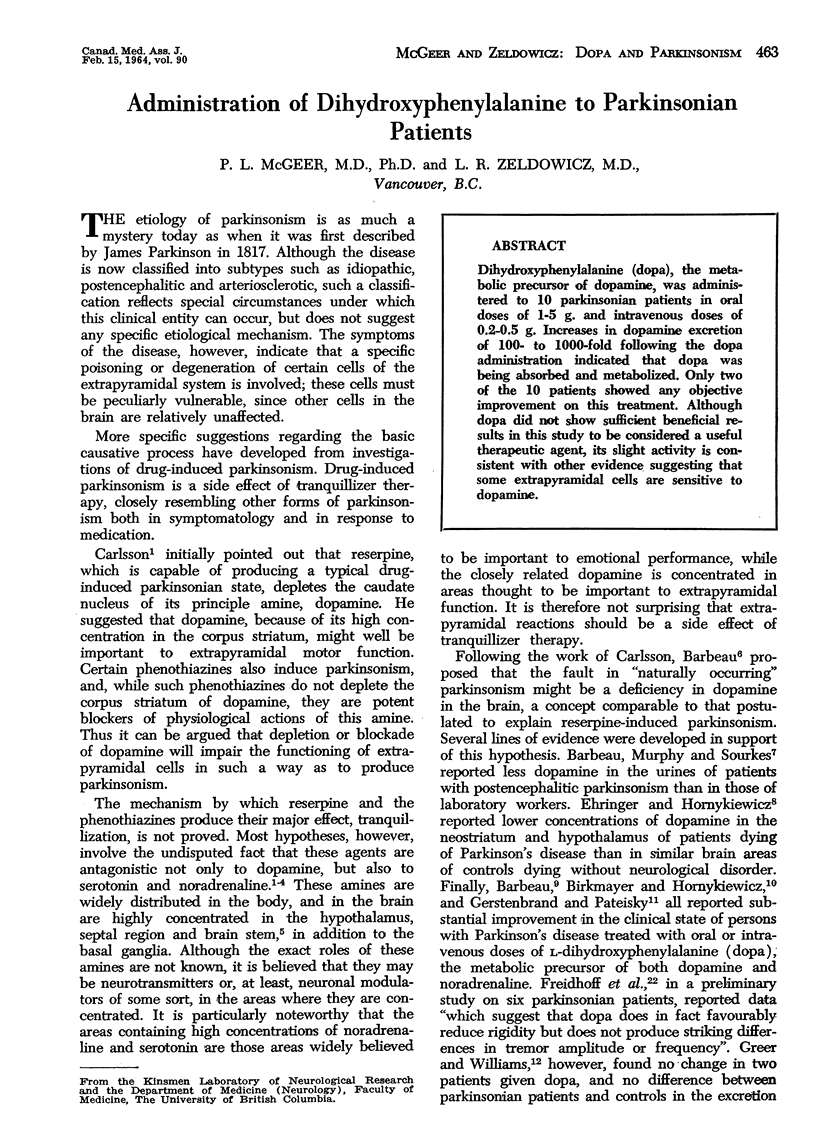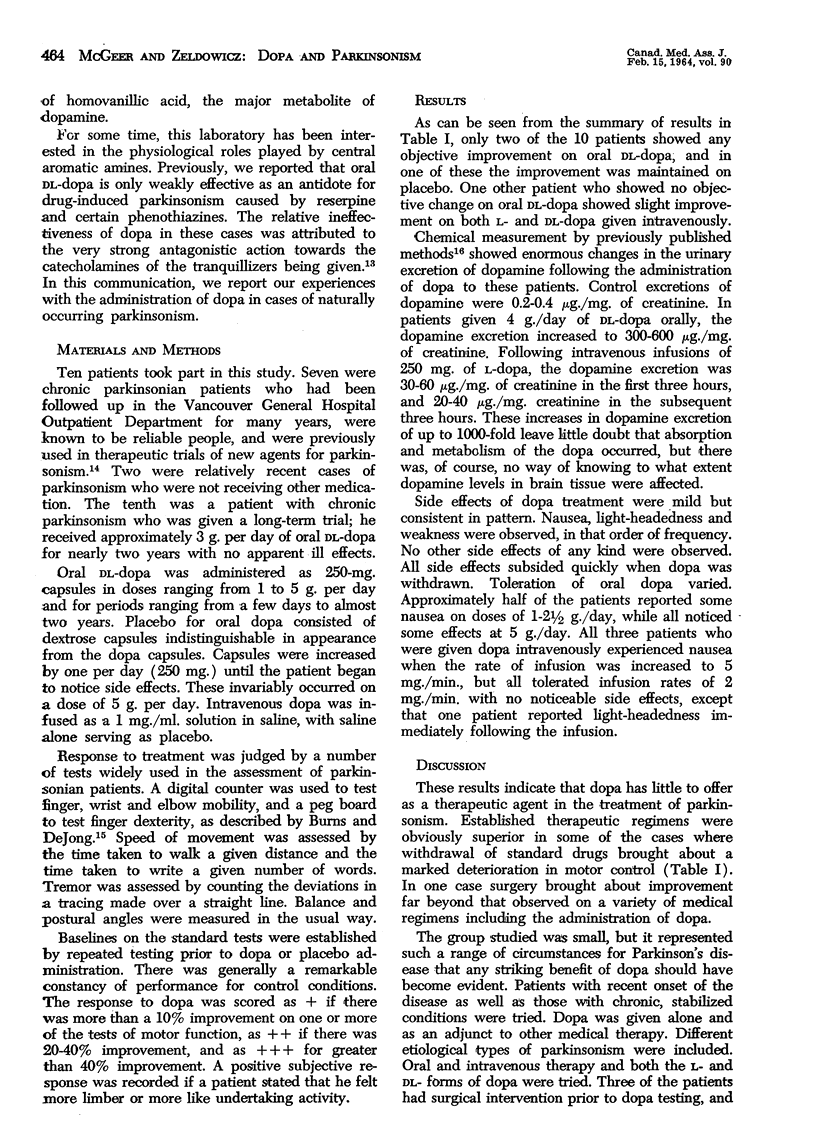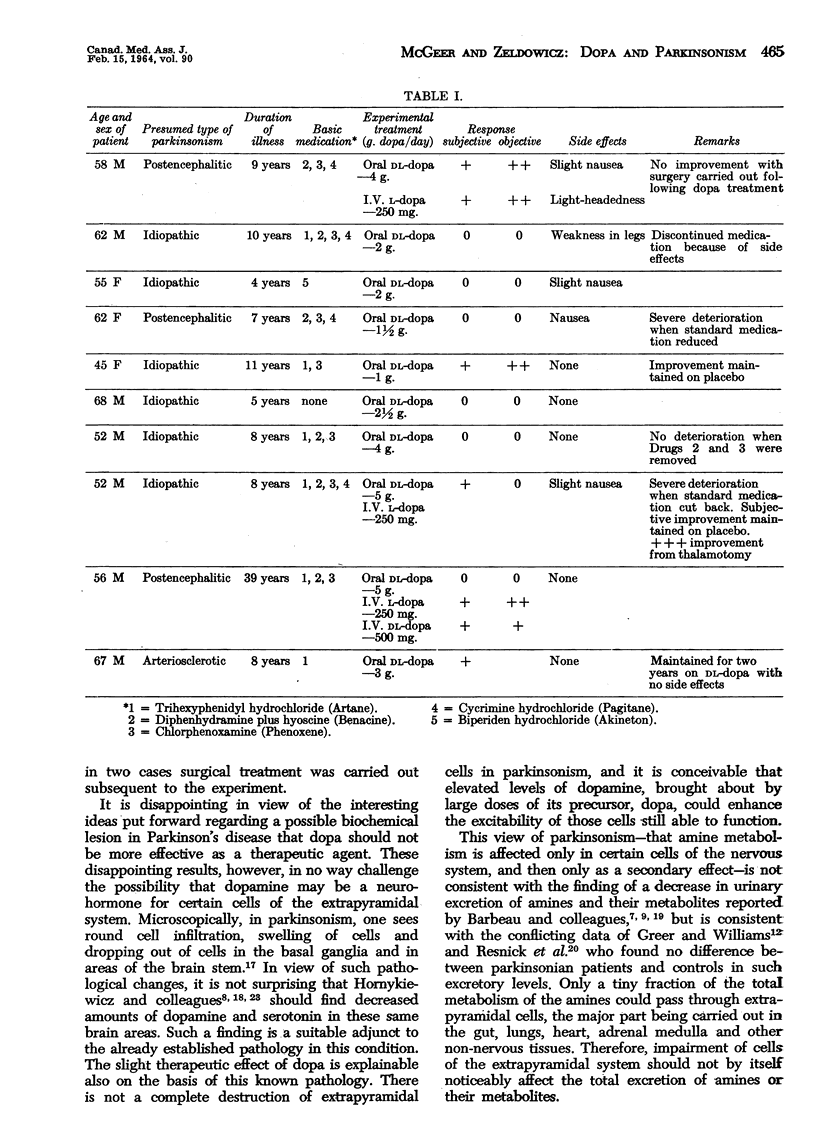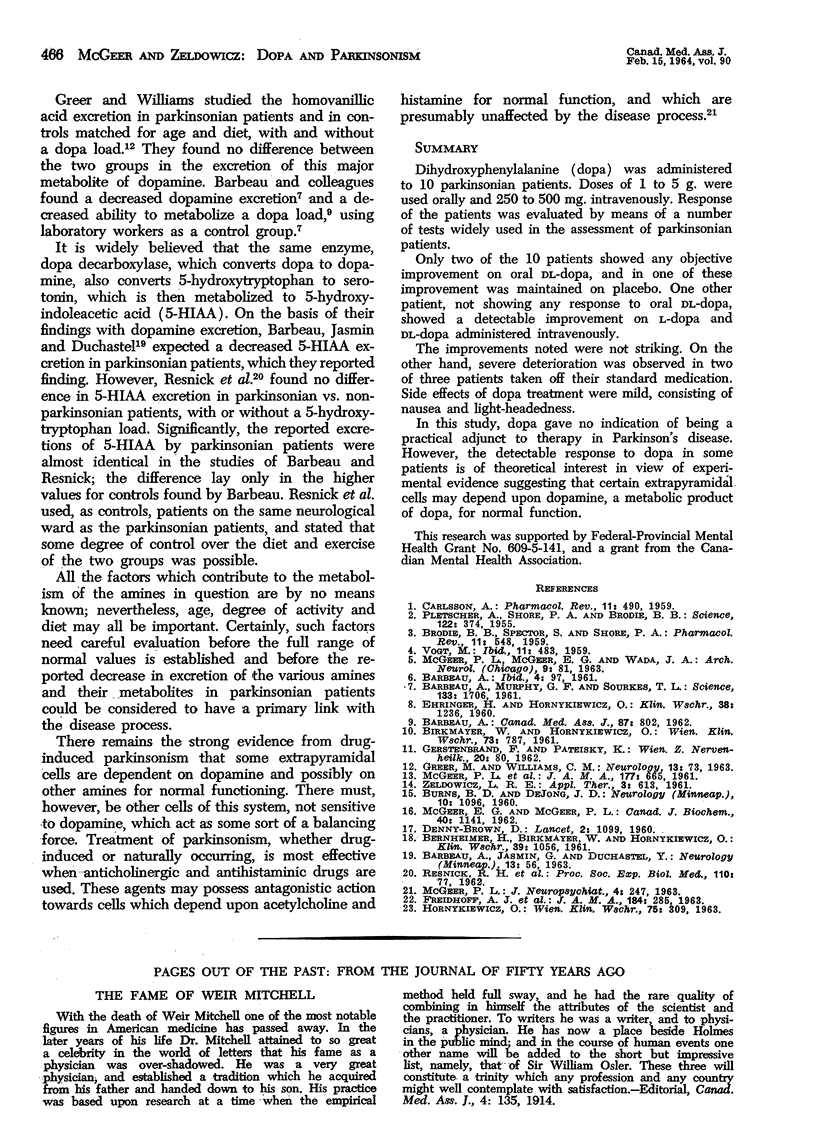Abstract
Dihydroxyphenylalanine (dopa), the metabolic precursor of dopamine, was administered to 10 parkinsonian patients in oral doses of 1-5 g. and intravenous doses of 0.2-0.5 g. Increases in dopamine excretion of 100- to 1000-fold following the dopa administration indicated that dopa was being absorbed and metabolized. Only two of the 10 patients showed any objective improvement on this treatment. Although dopa did not show sufficient beneficial results in this study to be considered a useful therapeutic agent, its slight activity is consistent with other evidence suggesting that some extrapyramidal cells are sensitive to dopamine.
Full text
PDF



Selected References
These references are in PubMed. This may not be the complete list of references from this article.
- BARBEAU A., MURPHY G. F., SOURKES T. L. Excretion of dopamine in diseases of basal ganglia. Science. 1961 May 26;133(3465):1706–1707. doi: 10.1126/science.133.3465.1706-a. [DOI] [PubMed] [Google Scholar]
- BERNHEIMER H., BIRKMAYER W., HORNYKIEWICZ O. [Distribution of 5-hydroxytryptamine (serotonin) in the human brain and its behavior in patients with Parkinson's syndrome]. Klin Wochenschr. 1961 Oct 15;39:1056–1059. doi: 10.1007/BF01487648. [DOI] [PubMed] [Google Scholar]
- BIRKMAYER W., HORNYKIEWICZ O. [The L-3,4-dioxyphenylalanine (DOPA)-effect in Parkinson-akinesia]. Wien Klin Wochenschr. 1961 Nov 10;73:787–788. [PubMed] [Google Scholar]
- BRODIE B. B., SPECTOR S., SHORE P. A. Interaction of drugs with norepinephrine in the brain. Pharmacol Rev. 1959 Jun;11(2 Pt 2):548–564. [PubMed] [Google Scholar]
- BURNS B. D., DEJONG J. D. A preliminary report on the measurement of Parkinson's disease. Neurology. 1960 Dec;10:1096–1102. doi: 10.1212/wnl.10.12.1096. [DOI] [PubMed] [Google Scholar]
- CARLSSON A. The occurrence, distribution and physiological role of catecholamines in the nervous system. Pharmacol Rev. 1959 Jun;11(2 Pt 2):490–493. [PubMed] [Google Scholar]
- DENNY-BROWN D. Diseases of the basal ganglia. Their relation to disorders of movement. Lancet. 1960 Nov 19;2(7160):1099–1105. doi: 10.1016/s0140-6736(60)92186-3. [DOI] [PubMed] [Google Scholar]
- EHRINGER H., HORNYKIEWICZ O. [Distribution of noradrenaline and dopamine (3-hydroxytyramine) in the human brain and their behavior in diseases of the extrapyramidal system]. Klin Wochenschr. 1960 Dec 15;38:1236–1239. doi: 10.1007/BF01485901. [DOI] [PubMed] [Google Scholar]
- FRIEDHOFF A. J., HEKIMIAN L., ALPERT M., TOBACH E. Dihydroxyphenylalanine in extrapyramidal disease. JAMA. 1963 Apr 27;184:285–286. doi: 10.1001/jama.1963.73700170010010c. [DOI] [PubMed] [Google Scholar]
- MCGEER P. L., BOULDING J. E., GIBSON W. C., FOULKES R. G. Drug-induced extrapyramidal reactions. Treatment with diphenhydramine hydrochloride and dihydroxyphenylalanine. JAMA. 1961 Sep 9;177:665–670. doi: 10.1001/jama.1961.03040360001001. [DOI] [PubMed] [Google Scholar]
- PLETSCHER A., SHORE P. A., BRODIE B. B. Serotonin release as a possible mechanism of reserpine action. Science. 1955 Aug 26;122(3165):374–375. doi: 10.1126/science.122.3165.374. [DOI] [PubMed] [Google Scholar]
- VOGT M. Catecholamines in brain. Pharmacol Rev. 1959 Jun;11(2 Pt 2):483–489. [PubMed] [Google Scholar]


